Type 6s are dramatic, sentimental, and dependable companions.
Reading time: 5 minutes

Gregory Park, Ph.D.
Author
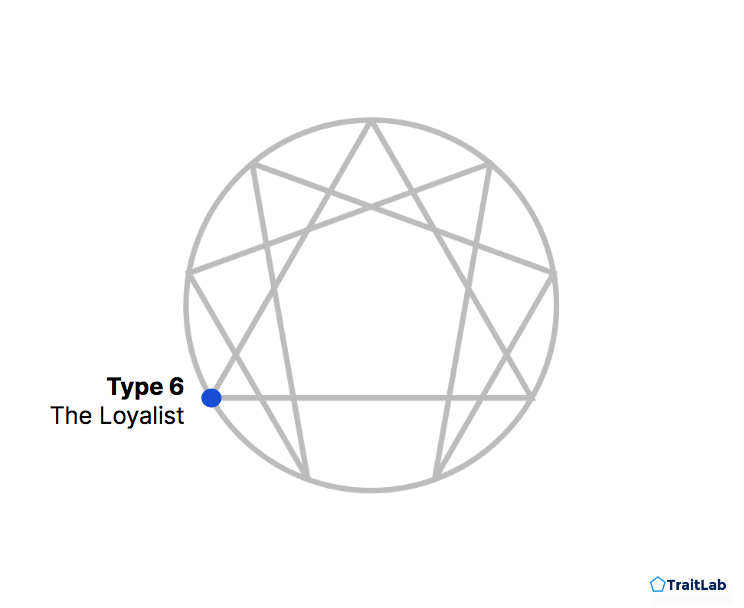
In the Enneagram framework, Type 6s — also known as Loyalists or simply Sixes — are dramatic, sentimental, and dependable companions.
Hook and colleagues (2021) describe Type 6s’ core desire as a need to be sure. At their worst, Type 6s can be deeply insecure and cling tightly to ideas and systems that provide them with reassurance and guidance.
This negative side emerges as a symptom of Type 6’s core fear of being without support or guidance.

Do you know your closest Enneagram type?
See how your personality compares to all nine types with TraitLab's comprehensive assessment.
Others might describe Type 6s as
The wordcloud below shows the top 100 words used to describe Type 6s. Bigger words describe the more prominent aspects of most Type 6s.
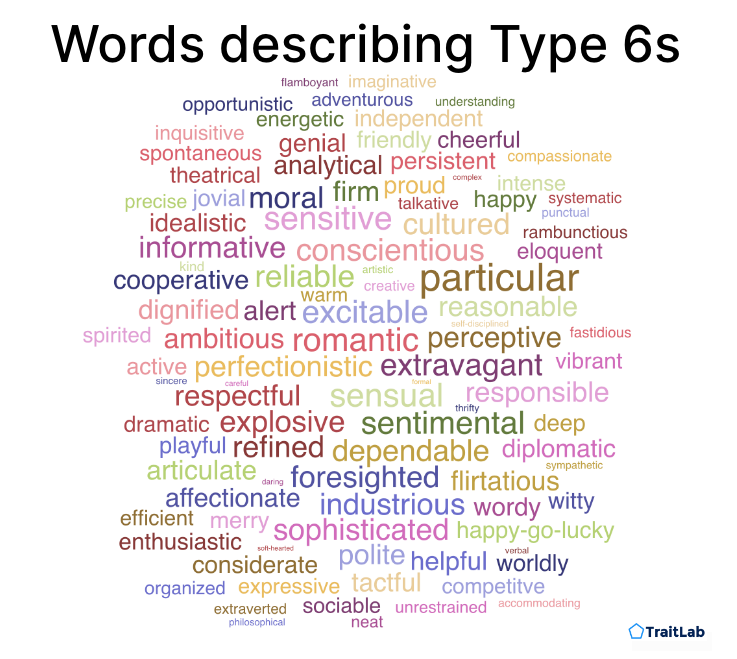
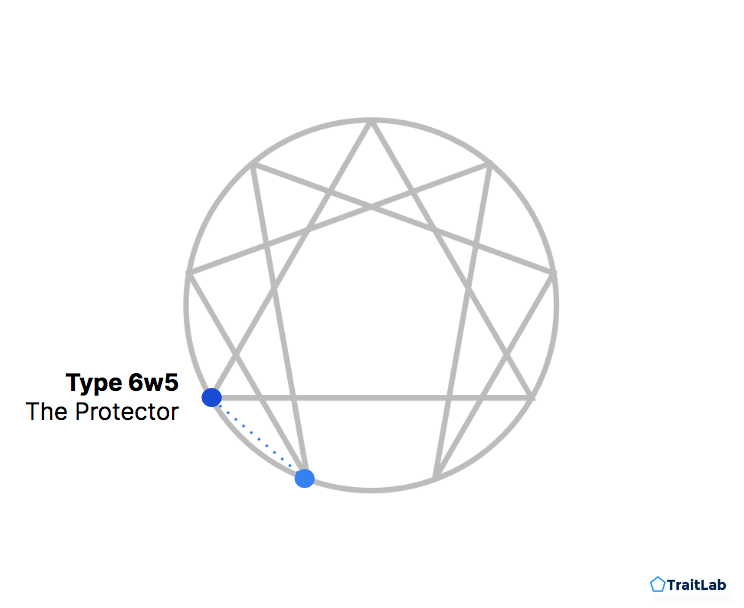
Type 6s with a 5 wing, or 6w5s, take on some characteristics of Type 5: The Investigator, including a stronger interest in the worlds of things, ideas, and systems. Type 6w5s are often fierce proponents of a particular point of view around social, cultural, or political issues. Type 6w5s are also easily agitated when others challenge their perspective.
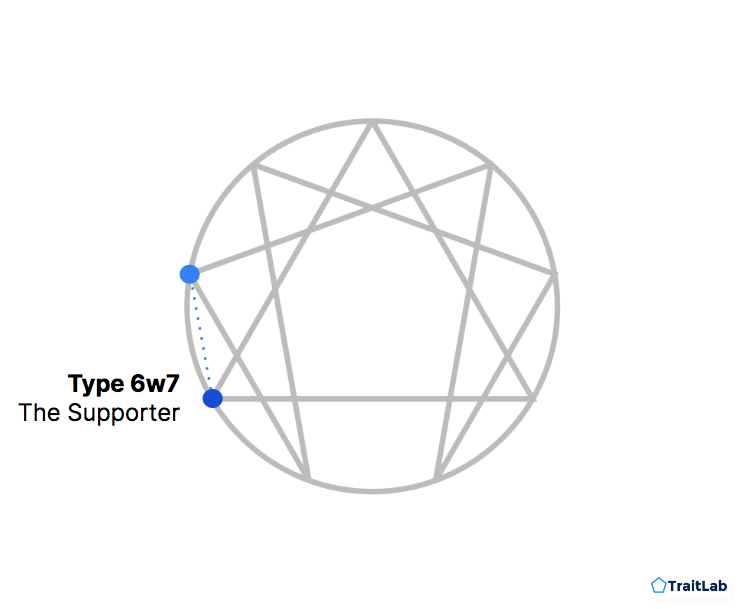
Type 6s with a 7 wing, or 6w7s, exhibit characteristics of Type 7: The Enthusiast. While Type 6w7s are still firmly anchored by their interpersonal relationships, this subtype has a much lighter, friendlier touch. Type 6w7s often bring enthusiasm and positive energy to their relationships, and they usually avoid the heavier, serious topics that often preoccupy their Type 6w5 counterparts.
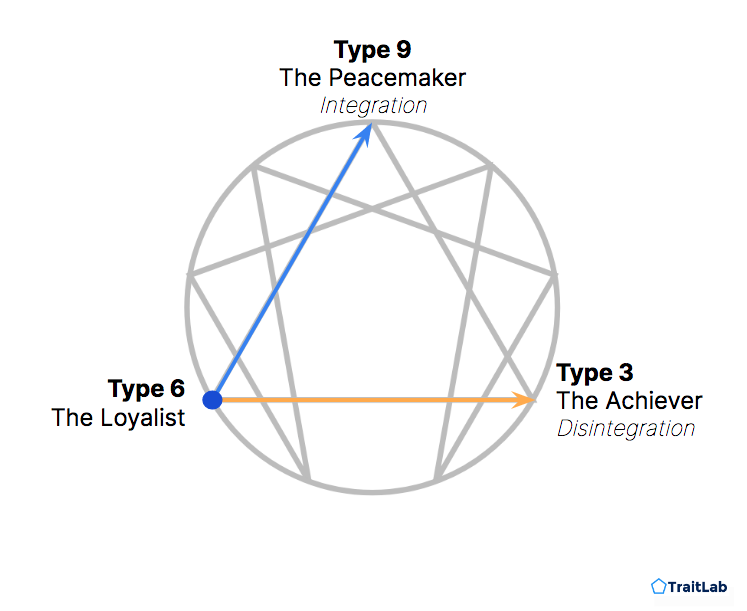
In times of health and security (i.e., integration), Type 6s shift towards Type 9: The Peacemaker. One indication of this shift is a reduction in self-consciousness and rumination. Healthy 6s have fewer neurotic tendencies, acting with greater self-assurance and an ability to trust their instincts.
In times of stress (i.e., disintegration), Type 6s shift towards Type 3: The Achiever. Following this shift, Type 6s’ social needs take on a competitive nature, and these Type 6s may lose themselves in an attempt to achieve success in others’ eyes. Disintegrated Type 6s are preoccupied with social comparisons and their current position on the social ladder, always looking for a way to climb the next rung.
Based on their distribution of personality traits, TraitLab estimates that roughly 3% of people would be classified as Type 6s. This makes Type 6 one of the rarest Enneagram types.
In studies of personality structure, researchers often use a trait-based approach to describing the differences between people instead of personality types. The most well-established method is the Big Five, which describes differences along five broad dimensions:
Personality types are far less precise than getting exact Big Five measurements, but knowing your personality type can give you a rough idea of where you fall on each dimension.
In the graph below, each dot is a Type 6, placed by where they fall on the Big Five dimensions. You can see that Type 6s can vary quite a bit on any single dimension.
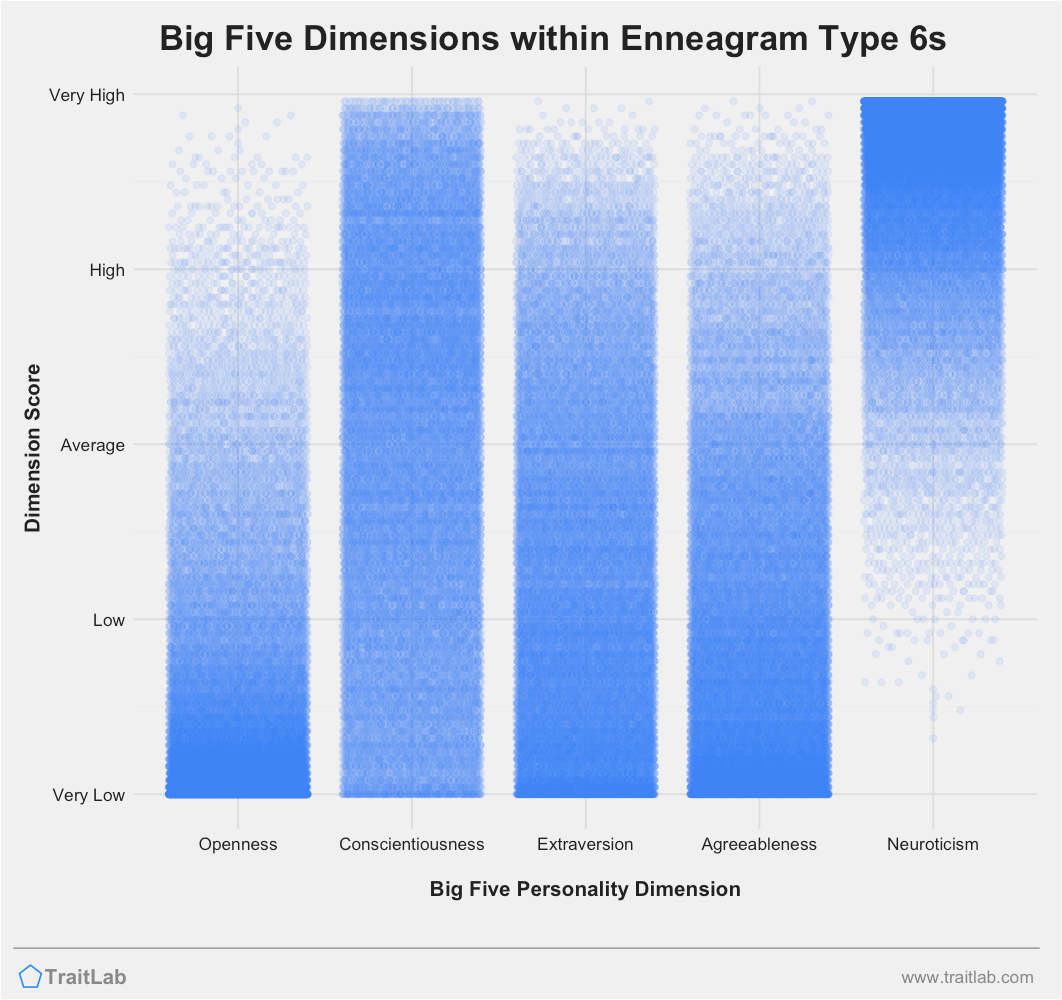
For example, on the Neuroticism dimension, Type 6s tend to score much higher than average, so the High and Very High areas are very dark blue. However, there are still a few rare Type 6s on the lower end of Neuroticism.
Below, you can see more detail on how Type 6s score on each Big Five dimension.
Type 6s tend to score lower on Openness to Experience, meaning they are often more conventional or traditional. Most Type 6s score below average on this dimension.
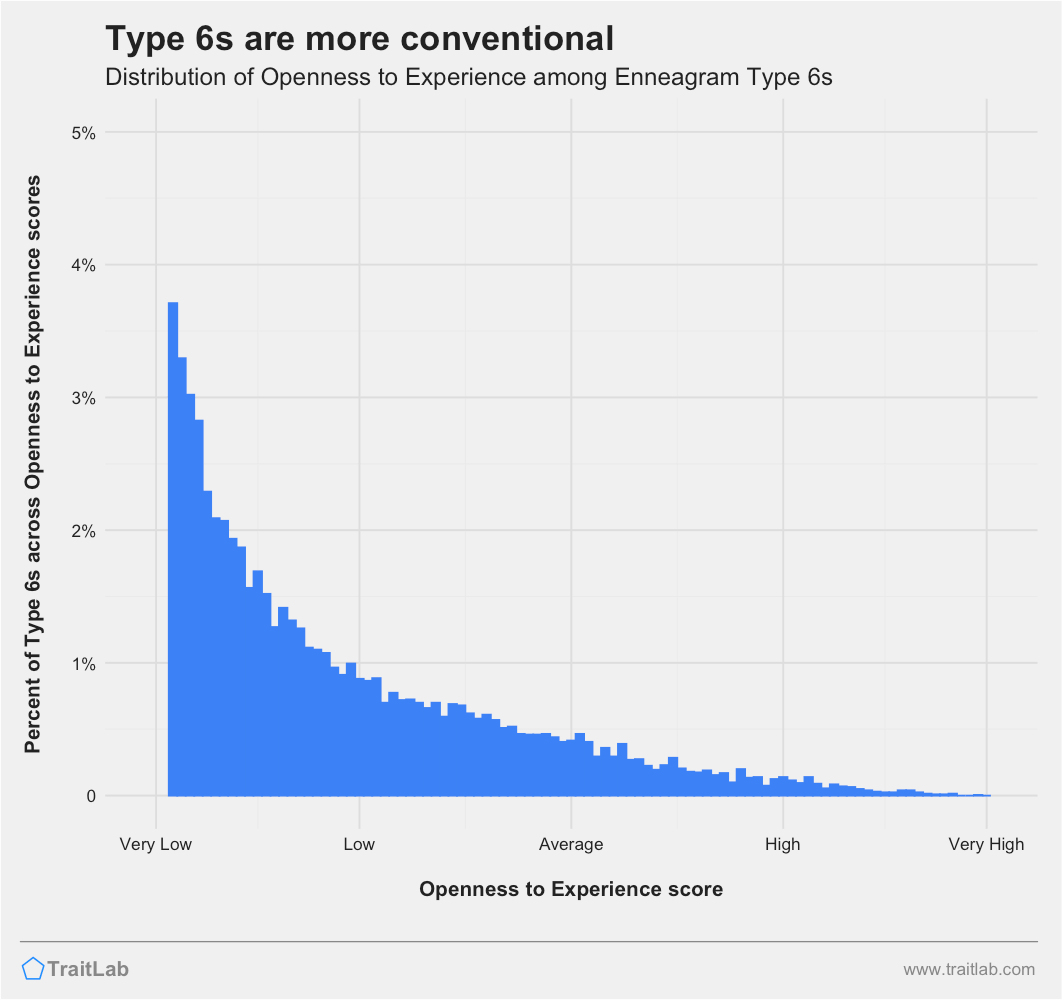
Openness to Experience describes your need for new information, feelings, and experiences.
Less open people prefer the familiar ways of doing things. They are less interested in trying new things or seeking out new experiences. They also tend to be less eccentric and have more conventional tastes in hobbies, music, and reading material.
Highly open people have diverse interests, and they may feel a constant need to learn and try new things.
Type 6s vary widely on Conscientiousness. Some Type 6s are highly conscientious, others are more spontaneous, and most are somewhere in between the extremes.
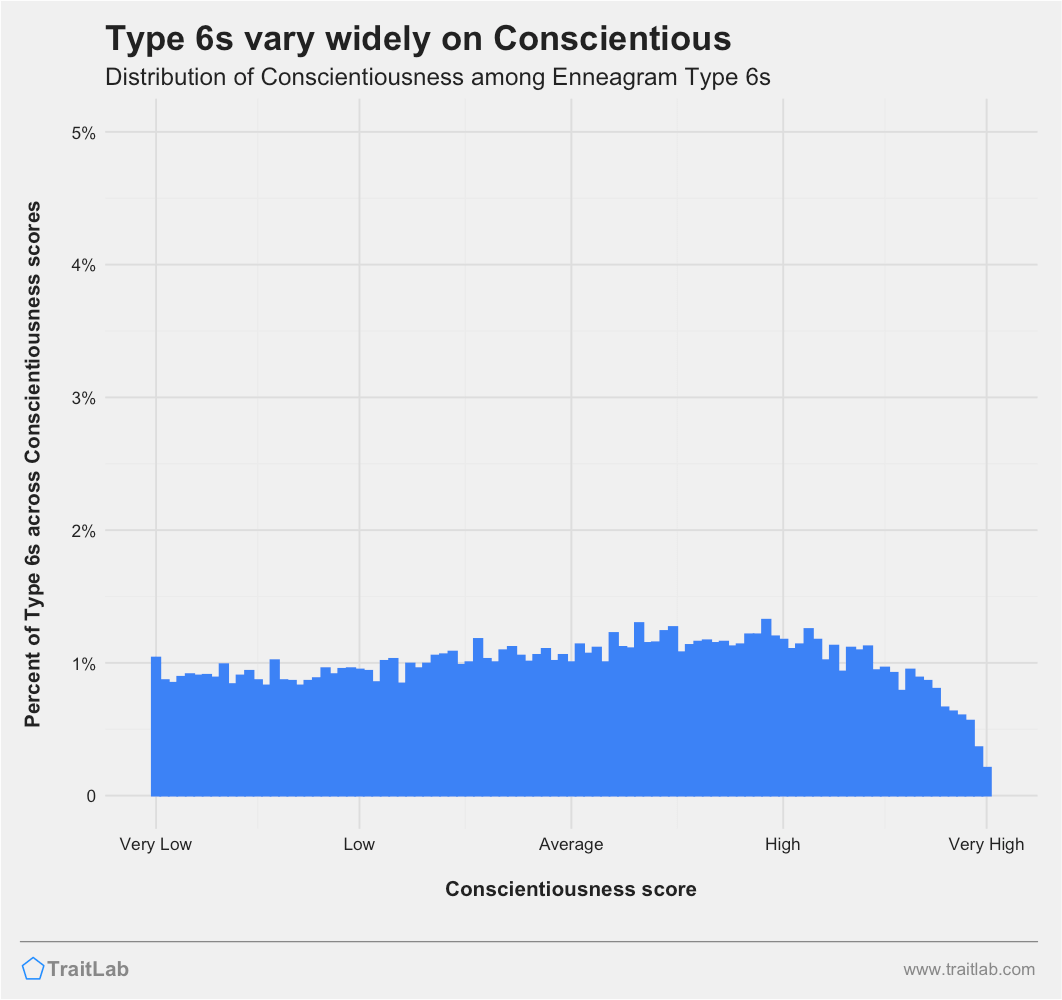
Conscientiousness describes our planning, organization, and regularity. Highly conscientious people, like some Type 6s, tend to create detailed plans to accomplish their goals and stick closely to them. They are less likely to be distracted by diversions or smaller short-term goals, and they excel at maintaining focus on the big picture.
The less conscientious Type 6s exhibit far less planning and organization. These Type 6s more readily accept chaos and irregularity and may actively avoid what they perceive as being too organized or systematic. They are less likely to be highly focused and dedicated to a single long-term goal. Instead, they tend to act impulsively, and happily bounce between smaller, short-term projects and goals.
Many Type 6s fall just below average on Big Five Extraversion, which describes tendencies around social engagement and experiences and expressions of positive emotions.
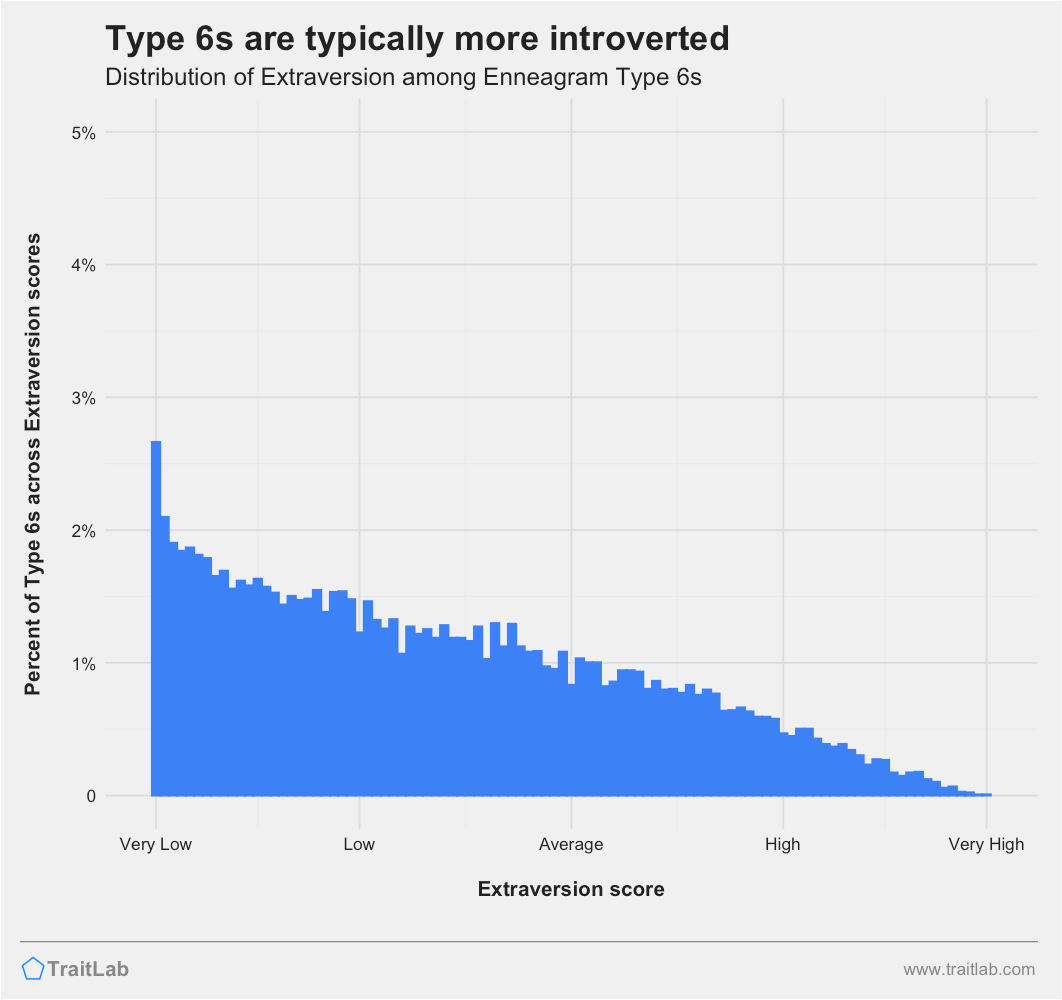
More introverted Type 6s may prefer to spend time engaged in more solitary activities or surround themselves with calm, less stimulating environments. Those Type 6s who fall closer to the average may more comfortably switch between highly social activities and quiet downtime alone.
A Type 6’s level of introversion will also be reflected in their patterns of emotional expression. As introversion increases, Type 6s may seem stoic and serious, less likely to display a range of positive emotions like joy, laughter, and excitement.
Type 6s often score slightly lower on Agreeableness and can be more demanding than most.
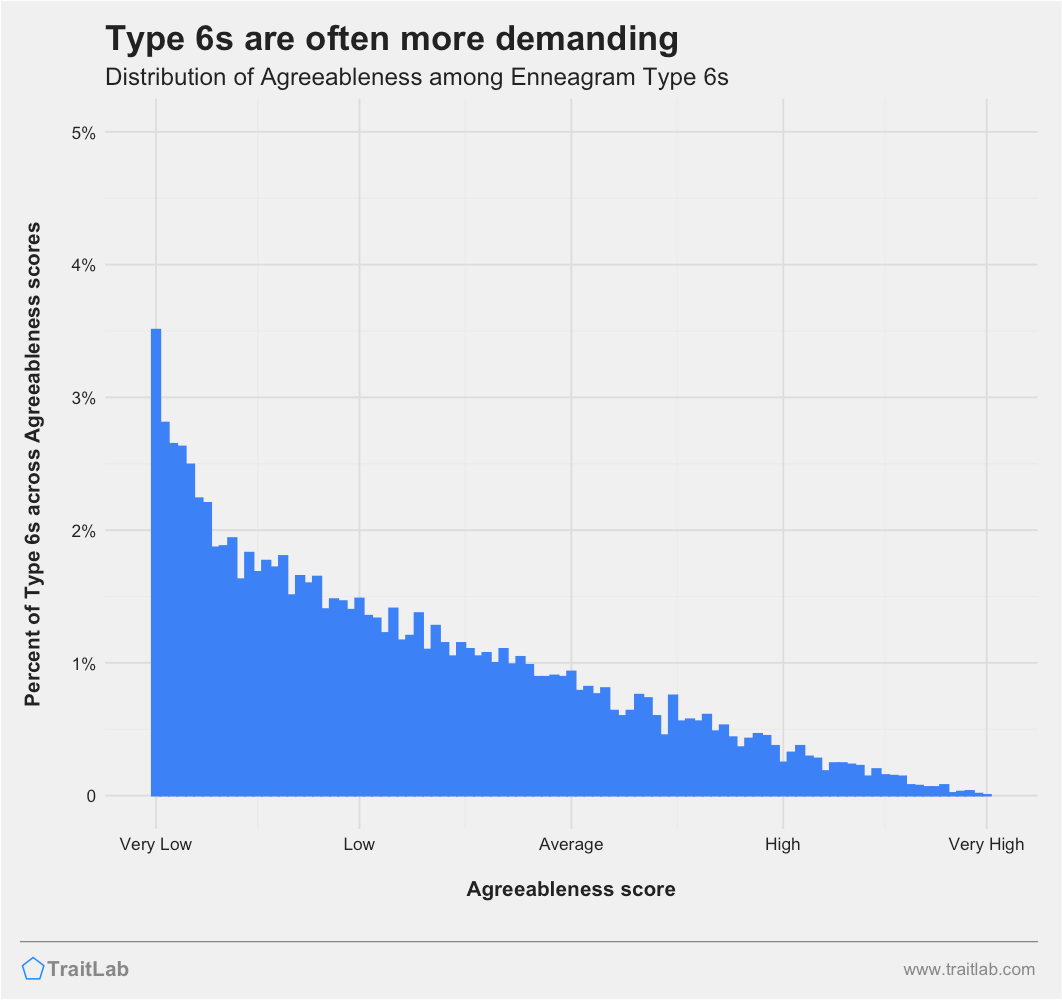
Agreeableness describes your interpersonal warmth, politeness, and empathy.
Like many Type 6s, less agreeable (or more demanding) people are often less concerned with others when pursuing their own goals. They are more willing to create conflict or express disagreement across most situations and feel less discomfort during interpersonal disputes.
Highly agreeable people feel a deep need to maintain warm, friendly relationships and are naturally more hesitant to impose their will on others. They will be more considerate of how their actions impact others and try to reduce or resolve interpersonal conflicts when they arise.
Most Type 6s score highly on Neuroticism, which describes how we react to stress and our tendency to experience a variety of negative emotions.
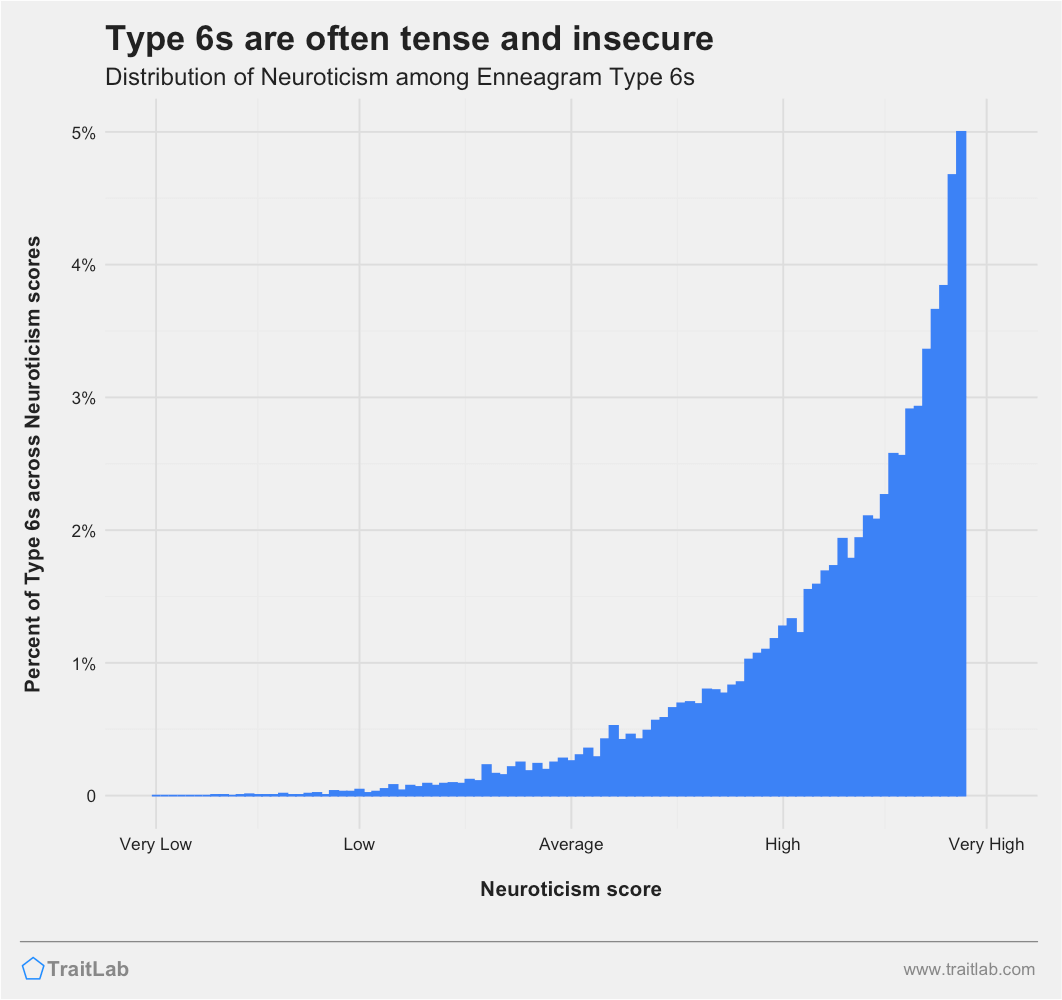
High Neuroticism is related to more frequent and dramatic mood swings and a general tendency to worry more often. In addition, more neurotic people are more irritable, have a shorter temper, and are more likely to dwell on negative experiences.
Higher Neuroticism can also manifest in more self-consciousness and rumination. Type 6s who are exceptionally high in Neuroticism may have difficulty letting go, being present, and enjoying the moment.
Most personalities can’t be described perfectly by a single Enneagram type.
However, with TraitLab’s Enneagram test, you can see which of the nine Enneagram types is most similar to your personality.
For comparisons between Type 6s and other Enneagram types, visit any of the type pairings below: